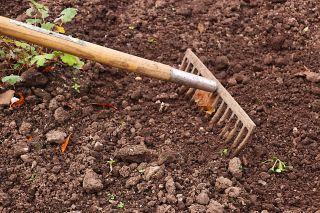Self-Help
Self-Improvement Can Be Made Easier Through Self-Cultivation
Removing barriers to change is a necessary first step in changing your life.
Posted January 12, 2024 Reviewed by Tyler Woods
Key points
- Old habits and attitudes can be barriers to creating a "new you."
- To be successful in self-improvement, you must first minimize the impact of competing attitudes and habits.
- "Self-cultivation" is a three step process that can improve your journey of self-improvement.

Have you ever found following through on those New Year’s resolutions regarding self-improvement challenging or just plain frustrating? One reason new habits are hard to form is that old attitudes and habits can get in the way. This explains why even desired self-improvements are often hard to build. In order to reconstruct and improve your life, first get rid of the barriers to growth, then add growth-promoting attitudes and behaviors. This process may be referred to as “self-cultivation.”
Change Begins With Self-Reflection
It's been said that at the end of the journey there is always a mirror. Perhaps the journey can be made far easier if the mirror is placed at the beginning. A review conducted in 1976 by the publishing house Prentice-Hall found there were no undergraduate college textbooks dedicated to the topic of personal stress management. Furthermore, there were few, if any, undergraduate courses focused solely on personal stress management. So, perhaps somewhat reluctantly, Prentice-Hall published what arguably was the first undergraduate textbook on personal stress management specifically for college classes. That book was Controlling Stress and Tension: A Holistic Approach (Girdano & Everly, 1977). The book contained three sections: 1) the science of stress, 2) a set of personal self-assessments (a set of "mirrors"), and 3) personal stress management techniques. That book was in print for over 40 years. When asked the key to the book's success, editors invariably say it was the pioneering set of self-assessments ("mirrors"). The text Clinical Guide to the Treatment of the Human Stress Response (Everly & Lating, 2019) now stands in its stead.
Since 1976, the topics of stress and stress management have surged to the forefront of societal consciousness, and myriad college classes on stress management have been created. Stress management resides within the genre of self-help or self-improvement, which represents a multi-billion-dollar industry. Interest in self-improvement shows no signs of waning. In fact, we appear to be searching for the next “new idea.” Built upon the notion of self-assessment and self-reflection, "self-cultivation” may be that new idea.
Defining Self-Cultivation
I have studied stress and stress management for literally 50 years. As I reflect upon what I’ve learned, the term self-cultivation best captures the processes involved in effective stress management and personal growth. Why?
The enduring acquisition of new, health-promoting attitudes and behaviors is predicated upon a two-step process: 1) removing “barriers” to successful change, and 2) implementing health-promoting attitudes and behaviors. That said, the failure to identify and remove barriers explains why enduring personal self-improvement programs fail more often than they succeed.
The removal of barriers is necessarily predicated upon their identification. To this day, publishers indicate readers want self-assessments. Sun Tzu once proclaimed, “Know the enemy as you know yourself.” In the case of stress, you have met the enemy. You know the enemy. They are you. The popularity of self-assessments likely resides in the fact they help people get to know themselves somewhat better, but especially in that they can identify barriers to self-improvement and growth.
Beyond Self-Assessments
The term “self-cultivation” is borrowed from agriculture and refers to the tilling or over-turning of crusty old soil, which serves as a barrier to revitalization. Failure to overturn this barrier reduces the subsequent production of the soil. It prohibits the absorption of nutrients for revitalization. In the psychosocial context of self-improvement, “self-cultivation” refers to removing old habits and attitudes serving as barriers to growth and then building intrinsic human capital so as to increase human potential beyond that which has been deemed “normal.” Self-assessments are certainly helpful, but are not always necessary. Informed self-reflection can do much the same thing. Self-reflection can help you recognize the people, places, and things that inhibit your growth.
Three Processes of Self-Cultivation
Only after you learn to recognize the barriers to creating a new you are ready to learn. The Chinese philosopher Confucious once asserted that we learn and acquire wisdom by three methods: self-reflection, observation, and experience. Psychological science 2,500 years later has confirmed these mechanisms of learning. Thus, these same three methods may be integrated within a self-cultivation model when harnessed within a simple, three-step process:
- According to Confucious, self-reflection/introspection is the most noble of all roads to wisdom. Informed self-reflection can not only reveal new options for self-improvement, it can help “till” the past and remove barriers to growth. Conversations with trusted friends and family, as well as with therapists, can jump-start and fuel the process of self-cultivation.
- The work of Albert Bandura (1997) in social learning models has confirmed the learning process is facilitated through observation. So, if you want to lose bad habits (barriers) and acquire new, growth-promoting habits, observe and speak with those who have done something similar (peers).
- Having watched and spoken with others, experience becomes a powerful teacher. You must overcome paralysis by analysis and take that first step, no matter how small. New behaviors are either extinguished or sustained under the laws of operant conditioning. Those behaviors that are reinforced (rewarded) are sustained. Those behaviors that are not reinforced fade into extinction. Find ways to reward yourself for health-promoting practices until those practices become intrinsically rewarding in themselves. Repetition is the key to learning. Behaviors that are repeated become habits. Over time, habits become traits. And new traits become a new you.
In the final analysis, the most powerful reinforcement comes from within ourselves. Psychiatrist Carl Jung once noted those who look outside themselves dream, while those who look inside themselves awaken.
© George S. Everly, Jr., Ph.D., 2024.
References
Bandura, A. (1997). Self-efficacy: The exercise of control. NY Worth.
Everly, GS, Jr. & Lating, JM (2019). Clinical guide to the treatment of the stress response. NY: Springer
Girdano, DA & Everly, GS, Jr. (1977), Controlling stress and tension: A holistic approach.Englewood cliffs, NJ: Prentice-Hall.


